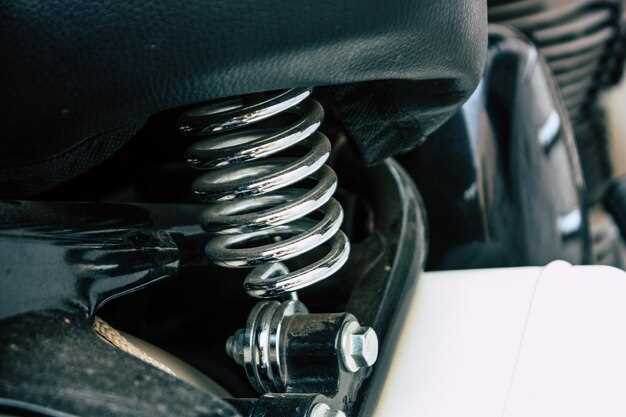
The significance of vehicle suspension systems cannot be overstated when it comes to ride comfort. Among the critical components of these systems are shocks and struts, which play an essential role in absorbing road irregularities and providing a smooth driving experience. Understanding how these components function and interact is vital for both vehicle manufacturers and consumers looking for optimal comfort during their journeys.
Shocks primarily serve to control the movement of the springs and prevent excessive bouncing, while struts offer structural support and contribute to the vehicle’s overall stability. The balance between these elements directly influences how well a vehicle can navigate uneven surfaces, making it essential to consider their condition when assessing ride quality. Regular maintenance and timely replacements can significantly enhance comfort levels and ensure a safer driving experience.
In this article, we will explore the various ways in which shocks and struts impact ride comfort, examining the technologies behind these components, their wear and tear over time, and the implications for both soft and firm suspension setups. By the end, readers will gain a comprehensive understanding of why these components are pivotal to the overall driving experience and ride quality.
Understanding the Role of Shocks in Vehicle Performance

Shocks, or shock absorbers, play a crucial role in the overall performance of a vehicle. They are designed to control the movement of the suspension system, ensuring that the tires remain in contact with the road surface. This constant contact is vital for maintaining traction, stability, and ride comfort.
The primary function of shocks is to dampen the effects of road irregularities. When a vehicle encounters bumps or potholes, shocks absorb the kinetic energy that would otherwise transfer to the chassis and its occupants. By doing so, they minimize uncomfortable jolts and vibrations, contributing to a smoother ride.
Another significant aspect of shocks is their influence on handling and control. Well-functioning shocks enhance a vehicle’s responsiveness to steering inputs and help maintain balance during cornering. This stability allows drivers to feel more confident and in control, especially in adverse driving conditions.
Additionally, shocks also affect tire wear. When shocks are worn or ineffective, uneven tire contact can lead to premature wear, reducing tire life and negatively impacting fuel efficiency. Maintaining shocks in optimal condition is therefore not only crucial for comfort but also for the overall efficiency and longevity of a vehicle.
In summary, shocks are vital components that influence ride quality, handling, and tire performance. Understanding their role can help vehicle owners make informed decisions regarding maintenance and replacements, ensuring optimal driving experiences.
How Strut Design Influences Ride Quality
The design and engineering of struts play a pivotal role in determining the overall ride quality of a vehicle. Struts, which integrate shock absorbers and support the weight of the vehicle, are essential for managing how a vehicle interacts with the road. Below are key aspects of strut design that directly influence ride comfort:
- Spring Rates:
The stiffness of the coil spring attached to the strut affects how the vehicle absorbs bumps and road imperfections. A well-matched spring rate helps maintain balance and comfort, preventing excessive bounce or harshness.
- Damping Characteristics:
The performance of the shock absorber within the strut is critical. It controls the rate at which suspension components move, providing a smooth transition over bumps. Different tuning options allow for softer or firmer ride characteristics, tailoring performance to driver preference.
- Strut Geometry:
The angles and positioning of struts influence vehicle handling and comfort. Optimal geometry allows for better alignment between suspension components, reducing friction and enhancing responsiveness during cornering.
- Material Selection:
The materials used in strut construction affect weight, rigidity, and durability. Lightweight materials can enhance performance by improving ride responsiveness, while durable options ensure longevity and reliability under stress.
- Adjustability:
Some struts offer adjustable settings for damping and ride height, allowing drivers to customize their experience based on preferences or specific driving conditions. This flexibility lets drivers balance comfort and performance as needed.
In conclusion, a thoughtful approach to strut design, including considerations for spring rates, damping characteristics, geometry, materials, and adjustability, is essential for optimizing ride quality. By understanding these elements, manufacturers can enhance passenger comfort and vehicle performance on diverse road surfaces.
Common Signs of Worn Shocks and Struts
Worn shocks and struts can significantly affect a vehicle’s ride comfort and overall handling. Recognizing the common signs of wear is crucial for maintaining optimal performance and safety.
1. Bumpy Ride: One of the most noticeable symptoms of worn shocks and struts is an excessively bumpy or jarring ride. If you feel every bump, pothole, or imperfection in the road, it’s likely that the dampening ability of your shocks and struts has diminished.
2. Uneven Tire Wear: Worn shocks and struts can lead to improper tire contact with the road, resulting in uneven tire wear. If you notice that your tires are showing bald spots or uneven tread patterns, it may be time to inspect your suspension components.
3. Nose Diving: When braking hard, a vehicle with worn struts or shocks may exhibit excessive nose diving. This occurs when the front end of the car dips significantly, affecting stability and control during stops.
4. Excessive Body Roll: A vehicle with worn shocks or struts will often demonstrate increased body roll during cornering. This can lead to a feeling of instability while navigating turns, making it difficult to maintain control.
5. Fluid Leaks: Visual inspection of shocks and struts may reveal signs of fluid leakage. Hydraulic fluid escaping from these components is a clear indication that they have become worn and are compromising their performance.
6. Loud Noises: If you hear clunking, banging, or rattling noises while driving, especially on uneven surfaces, it could indicate that the shocks and struts are worn out. This noise results from the absence of proper dampening and can be a sign of serious wear.
7. Difficulty Steering: Worn shocks and struts can affect steering response and accuracy. If you notice that your vehicle feels loose or wanders while driving, this may be attributed to degraded suspension components.
Being aware of these signs is essential for ensuring the longevity of your vehicle’s suspension system and enhancing ride comfort. Regular maintenance checks can help identify worn shocks and struts before they lead to more extensive damage or safety issues.
Adjusting Suspension Settings for Optimal Comfort

To enhance ride comfort, proper adjustment of suspension settings is essential. Struts play a crucial role in this process as they manage how the vehicle reacts to uneven surfaces. The stiffness of struts can significantly influence both comfort and handling performances. Adjusting the damper settings allows drivers to fine-tune the absorption of road shocks, thereby improving overall ride quality.
First, it is important to understand the manufacturer’s specifications regarding the factory settings of struts. These settings often achieve a balance between comfort and performance. To achieve optimal comfort, consider adjusting the struts to a softer setting. A softer strut allows for greater wheel travel which enhances the capacity to absorb bumps and imperfections in the road surface.
Another critical factor is the preload setting of the suspension. By modifying the preload, drivers can manage the weight distribution on the struts, affecting how the vehicle responds to road conditions. A well-planned adjustment can significantly reduce the harshness of the ride without compromising handling.
Tuning the rebound and compression settings further aids in achieving the desired comfort level. A slower rebound rate can allow for a more plush feel over rough surfaces, while a slightly quicker compression can help maintain stability during cornering. Striking the right balance between these settings is vital for maximizing comfort during various driving conditions.
Finally, testing different settings under real-world conditions is essential. Each driver’s comfort preference may vary, and adjustments should be made based on personal feedback. A systematic approach in testing allows for gradual refinements that lead to the perfect suspension setup tailored to individual needs.
Comparing Types of Shocks and Their Comfort Levels
Shock absorbers and struts play a vital role in determining the ride comfort of a vehicle. Each type has unique characteristics that affect how passengers experience road imperfections. Understanding these differences is essential for maximizing comfort.
Conventional shock absorbers, usually found on vehicles with separate suspension systems, primarily manage the energy produced by bumps and dips. They convert kinetic energy into thermal energy, dissipating it to provide a smoother ride. The comfort level greatly depends on the design and gas or oil-filled configurations. For example, nitrogen gas shocks offer quicker response times and reduce fade during prolonged use, leading to enhanced comfort on long journeys.
Struts, on the other hand, are a vital component of the suspension system in many modern vehicles. Unlike traditional shock absorbers, struts actually provide structural support to the vehicle, which means they are integral to maintaining alignment and overall vehicle stability. The combination of damping and structural functions enhances ride comfort by effectively controlling the vehicle’s response to road irregularities.
Another common type of shock is the air shock, which utilizes an air bladder to change the damping characteristics based on load and requirements. This adaptability can be superior for comfort, as the air pressure can be adjusted, allowing for a plush ride when desired. However, they may require more maintenance and can sometimes be less reliable than traditional shocks and struts.
When comparing comfort levels, it’s crucial to consider not only the type of shock or strut used but also factors like vehicle weight, type of terrain, and driving style. For instance, vehicles designed for off-road use often have specialized shocks that excel in absorbing impacts, providing a buffer against rough terrain while still ensuring passenger comfort.
In summary, while traditional shock absorbers, struts, air shocks, and specialty options each offer different comfort levels, the choice ultimately depends on the specific needs of the vehicle and its intended use. Being aware of these differences allows consumers to select the most appropriate suspension system to ensure the best possible ride quality.
Maintenance Tips for Prolonging Shock and Strut Lifespan
Proper maintenance of shocks and struts is essential for ensuring vehicle safety, ride comfort, and performance. Here are several effective tips to extend the lifespan of these critical components:
Regular Inspections: Conduct routine inspections of shocks and struts every six months or during regular vehicle servicing. Look for signs of wear, such as leaks, rust, or physical damage. Early detection of issues can prevent further problems.
Check for Leaks: Monitor for any fluid leaks around shock and strut mounts. A leaking shock indicates that it’s no longer performing effectively, which can lead to a rough ride and increased wear on other suspension components.
Avoid Overloading: Be mindful of the vehicle’s weight capacity. Excessive loading can place extra stress on shocks and struts, leading to premature wear. Adhere to manufacturer guidelines for weight limits to maintain optimal function.
Inspect Suspension Components: Ensure that all related suspension parts, such as bushings, ball joints, and mounts, are in good condition. Worn components can adversely affect the performance and lifespan of shocks and struts.
Rotation of Tires: Regularly rotate tires to ensure even wear. Uneven tire wear can lead to an imbalanced suspension, putting additional strain on shocks and struts. Maintaining proper tire pressure is also crucial for optimal performance.
Drive Responsibly: Adopt a smooth driving style to minimize sudden jolts and impacts on the suspension system. Avoid potholes, road debris, and harsh driving conditions, as these can cause unnecessary wear on shocks and struts.
Professional Servicing: Have shocks and struts professionally inspected and serviced as recommended by the vehicle manufacturer. Regular servicing can help identify potential issues before they escalate.
Keep Shock Mounts Tight: Periodically check and ensure that shock and strut mounts are securely fastened. Loose mounts can lead to excessive movement and noise, which can shorten the lifespan of these components.
Incorporating these maintenance practices can help you maximize the performance and longevity of your shocks and struts, ultimately enhancing your overall ride comfort and safety.
